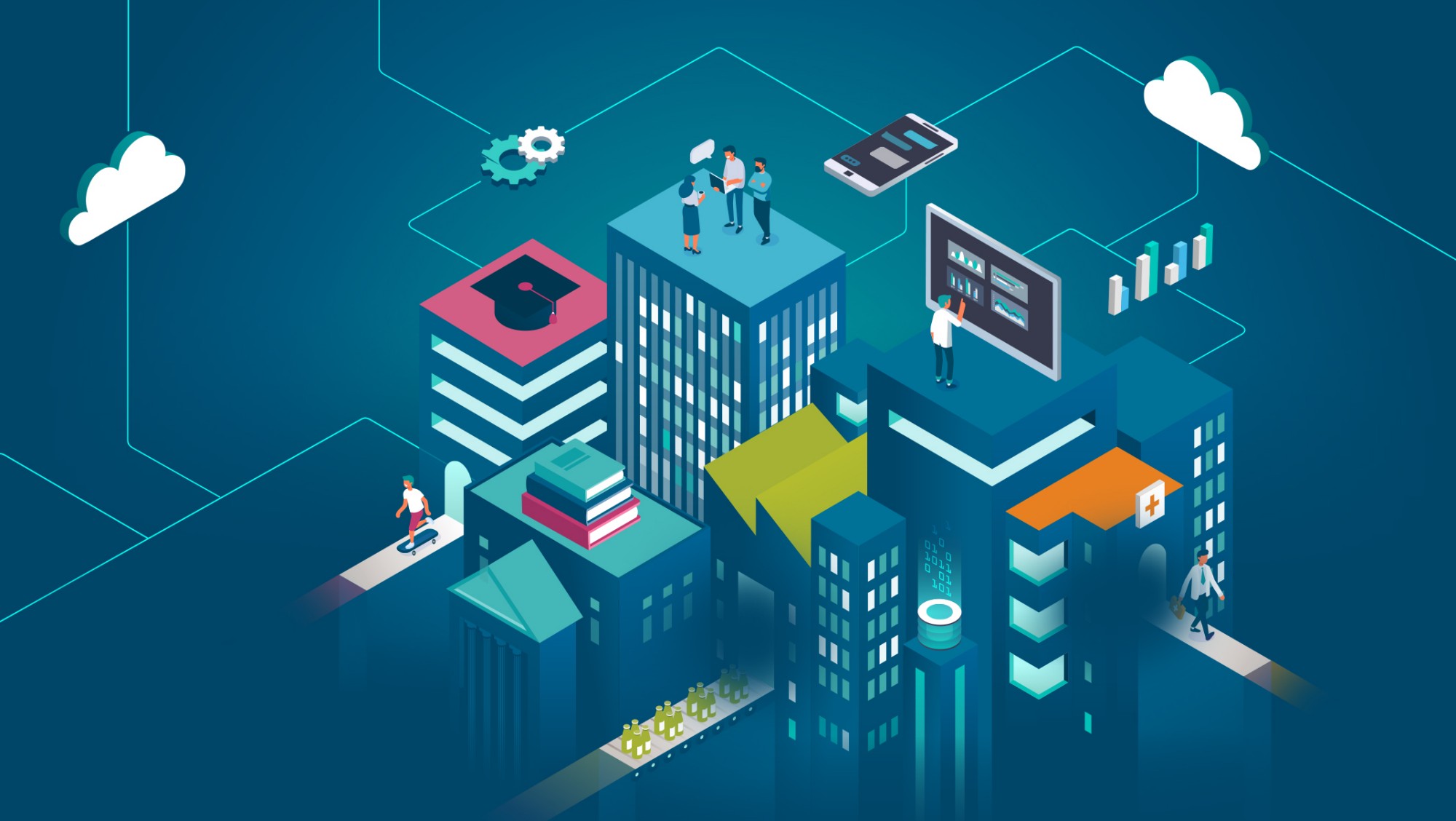Why BIM is the right choice for smart buildings?
What is a smart building?

The term ‘smart’ is linked to various aspects of our daily lives. ‘Smart city’, ‘smartphones’ etc have become part of our vocabulary. ‘Smart building’ is another addition to the list and is an emerging concept in the AEC industry.
What is a smart building?
A building is more than a concrete structure. It’s a place where residents spend the maximum amount of their time. Hence, it’s crucial that the building ensures the safety and well-being of its residents; a ‘smart building’ that provides comfortable, safe, energy-efficient, and environment-friendly space. Such buildings also offer business benefits like better asset management, enhanced operations, cost-efficiency, and reduced human effort.
A smart building uses technology to control the asset and its systems throughout the asset lifecycle. The core systems such as ventilation, heating, cooling, lighting, security, and fire alarms are linked with sensors and integrated control systems, for example, sensor lights and automated doors. Post the COVID-19 pandemic, these automated systems are all the more crucial as they help reduce the virus' contraction due to human contact in the common spaces.
Smart buildings need smart technology to gather data about the building elements right from the designing, planning, procurement, and construction to the building operation and maintenance. BIM can provide support for the construction and management of these smart buildings through ready-to-reckon information.
BIM, an innovative technology, has gained worldwide traction in the past few years and several worldwide small-and-large scale projects have witnessed BIM implementation benefits. Now let’s understand why BIM is the go-to technology for smart buildings:
Improves collaboration
One of the most salient features of BIM is the shared information model that provides easily accessible data to architects, engineers, designers, and other project members. Changes in design are reflected in real-time in the model thus ensuring all stakeholders are aware of the project's progress. This also avoids conflicts among stakeholders at any project phase and helps in better decision-making during smart building construction.
Ensures project efficiency
The real-time tracking also helps in gauging the exact material requirement and procurement thus avoiding over-ordering and exceeding the budget for a smart building. The enhanced communication and collaboration between stakeholders also helps avoid the time and money loss due to rework.
Enables 3D visualization
BIM’s 3D modelling helps project members to design and visualize the building. This 3D modeling provides necessary information on underground construction such as fiber-optic cables and existing pipelines. The 3D representation allows project stakeholders to plan construction without hindering the existing underground construction. The BIM Implementation Benefits increase with the upgrade in modelling dimensions. The 4D dimension offers information on the smart sensors and devices located in the design phase. The 5D, 6D, and 7D dimensions enable measuring the scope of work, cost estimate, scalability, and construction process at various stages during construction and after completion of project.
Assists in building a comprehensive security system
BIM can also be the basis for developing a comprehensive security system. The information on smart sensors and automated systems throughout the building can be integrated to ensure residents’ safety. This information can even help project managers monitor on-site construction activities.
Improves facility management
The as built Scan to BIM Model provides detailed information about the building right from the design stage, planning, construction to project completion. The model contains data on all building elements including their location which is crucial during maintenance of the building. The smart building design is easily accessible to facility managers who can then gauge the optimum performance of building components and plan the repair accordingly.
Digital revolution is evident across all industries and the AEC industry is not far behind. Building Information Modeling (BIM) is one such technology that has been transforming the way we view construction. This technology, if effectively used in the construction and maintenance of smart buildings, can guarantee a safe, resilient, energy-efficient and cost-effective living space for the residents.
Source: https://excelize.com/blog/keeping-bim-at-the-heart-of-smart-cities












